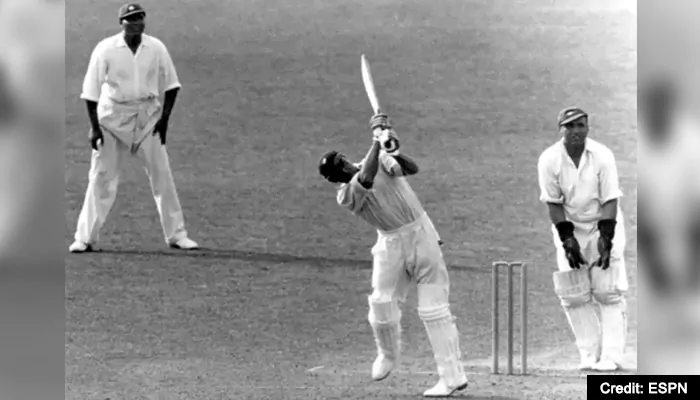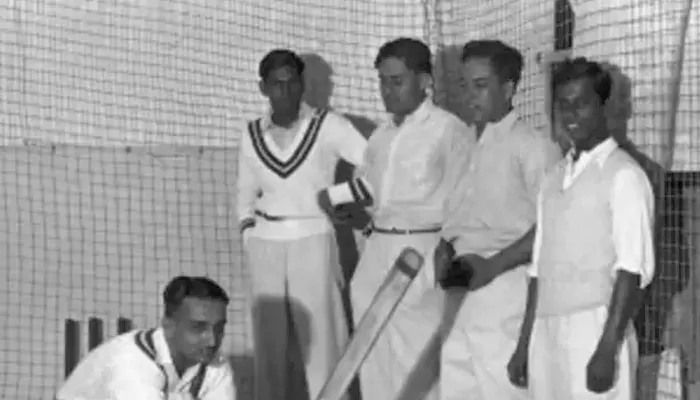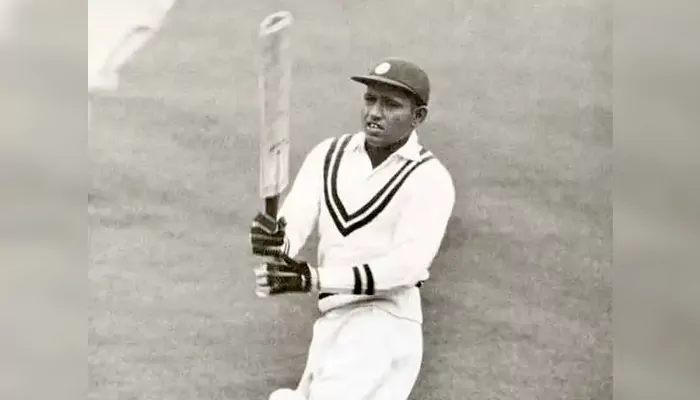
When Merchant and Mushtaq made merry, but victory remained elusive in Manchester's grey skies
Manchester, 1936. A year when Test matches did not yet extend into five-day battles. A time when India, still new to the international scene, was learning how to survive the challenges of English conditions. The Old Trafford Test of July 1936-a four-day match-was not just a fixture; it was a crucial chapter in India’s ongoing relationship with English soil.
This was not a famous victory. In fact, India has never won a Test at Old Trafford so far-nine played, four defeats, five draws. But this match, in many ways, was the first indication of resilience from a team still learning to walk in whites. And it exhibited the qualities of grit, determination, and skilled strokeplay, even when outplayed.
India batted first, and the scoreboard tells a story of missed starts and short-lived stands. Vijay Merchant, as elegant as ever, scored 33 before falling to Verity. Syed Wazir Ali’s 42 and Cotar Ramaswami’s 40 helped lift the innings, but it was never enough to seize control.
England’s left-arm spinner Hedley Verity claimed 4 wickets and helped dismiss India for 203 in just over 68 overs. The innings saw no major collapse but lacked impact, ending underwhelmingly in the context of a looming English batting line-up.

Credit: ESPN
England’s response was relentless. Wally Hammond’s majestic 167 anchored a sizable total of 571 for 8 declared, compiled over four gruelling sessions. Joe Hardstaff Jr. (94), Stan Worthington (87), and Walter Robins (76) contributed as Indian bowlers struggled under the Manchester clouds.
Although Amar Singh and Mohammad Nissar took 2 wickets each, the attack lacked bite. India’s fielding faltered, and the bowling attack failed to disrupt partnerships after dismissing the top order. The hosts established a commanding lead of 368, leaving India in a precarious position.
But what happened next turned heads. India, facing an innings defeat, came out fighting-carefully and with resolve. Vijay Merchant and Mushtaq Ali opened with a 203-run partnership, both scoring memorable centuries.
Merchant scored 114 off 255 balls, while Mushtaq displayed flair and confidence, smashing 112. Their partnership stunned England, silencing the crowd and forcing fielders to chase leather across the outfield. It was India’s first significant stand of dominance in England.
Cotar Ramaswami’s 60 and Amar Singh’s unbeaten 48 added polish to an already defiant innings. By the time stumps were drawn on Day 4, India stood tall at 390/5, and the match ended in a hard-fought draw. These individual performances, along with the 203-run partnership, showcased the resilience and skill of the Indian team.

Credit: TOI
The 1936 Manchester Test didn’t attract much attention at the time. India didn’t win, and England didn’t lose. However, for Indian cricket, this match was about developing in the game, understanding English conditions, and demonstrating they belonged.
The second-innings comeback showed what Indian batters were capable of when given a chance to settle. More than just a statistic, it marked a turning point in their temperament.
Fast forward to 2025. India has visited Old Trafford nine times since that Test but has yet to secure a victory. The ghosts of missed opportunities still linger, and the memories of hard-fought draws remain in the dressing room.